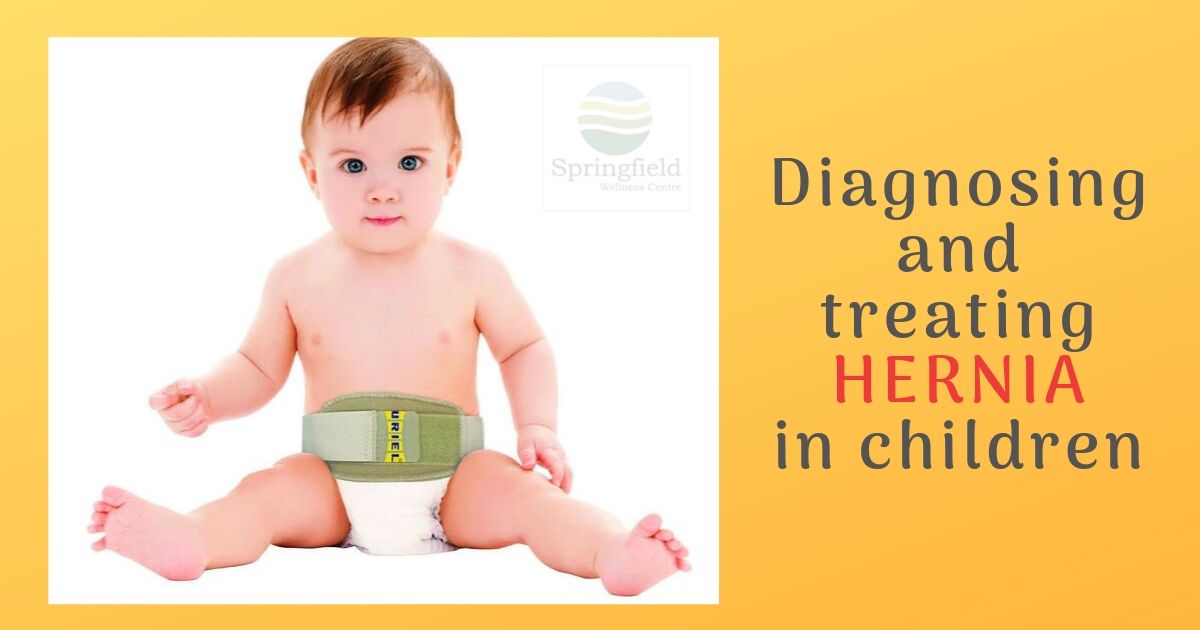Diagnosing and treating Hernia in Children
A hernia is a condition where a part of an abdominal organ or tissue pushes through a weak spot in the abdominal muscle wall. This causes the abdominal organs and tissues to protrude in a place where they do not belong. A hernia is externally seen as a bulge or lump. A lesser-known fact about Hernia is that it can occur in children too. Sometimes even babies are born with a hernia, especially preterm babies. Hernias in children can be treated, but it is important to identify their symptoms so that child can get appropriate medical care. The two types of hernia that can occur commonly in children are Inguinal Hernia and Umbilical Hernia.
How does an inguinal hernia occur in a child?
All children, during the fetal stage, have an area called an inguinal canal. This canal goes from the abdomen to the genitals. In male children, this canal allows the testicles to descend into the scrotum, the sac that holds the testicles. Usually, the baby’s inguinal canal closes shortly after birth. In some cases, this inguinal canal does not close. This can cause intestinal tissue to move into the inguinal canal through the weak spot in the abdominal wall causing an inguinal hernia. Inguinal hernia mostly occurs in male children.
How does an Umbilical hernia occur in a child?
During the fetal stage, the nutrition to the child inside the womb goes through the umbilical cord. After the childbirth, the umbilical cord is clamped and divided. Normally, the remaining umbilical cord stump closes on its own in mostly few days to weeks’ time. For some children, especially preterm or with the umbilical cord stump infection, the muscle may not close. Through this small opening in the abdominal muscle, organs and other contents of the abdomen can protrude. This is how umbilical hernia occurs in children.
How are Inguinal and Umbilical hernia diagnosed in a child?
First and foremost, only a mother watches the unusual symptoms associated with hernias. If it is Umbilical the mother observes a bulge in the navel area. She also observes that when the baby cries or goes motion the bulge slightly balloons. In the case of Inguinal Hernia, the mother observes that the baby strains when urinating or passing the motion. She would notice that the tip of the penis bulges as the baby urinates.
A physical examination is the next form of diagnosis that the doctor will do to rule out the possibility of a hernia. Both types of hernia are detected during a routine physical examination by any pediatrician after the narration of history by mother. Sometimes parents might notice a bump in the navel area (in case of umbilical hernia) which is very prominent or a bump near the groin area (in case of an inguinal hernia).
Sometimes a small hernia can easily be pushed back into its place manually without any surgical procedure. This is known as a ‘Reducible Hernia’. This procedure can be done only by an experienced pediatrician or a gastro surgeon. If the hernia cannot be pushed back, an abdominal X-ray or an ultrasound will be performed to view the intestine and other abdominal structures more closely. This diagnosis is done to understand the nature of the hernia and how the internal organs and fat tissues have organized themselves inside the hernia opening.
Treatment for Hernia in children
If the hernia is not reducible, then the surgeon looks for other things based on the type of the hernia. If it is Umbilical hernia, the surgeon first looks for any abdominal organ strangulated inside the hernia. Only this situation is an emergency and calls for immediate surgery to prevent complications. Otherwise, umbilical hernia in infants usually resolves by itself within 6 months to 1 year. If it does not resolve within 3 years of age, then only surgery is recommended.
If the hernia type is inguinal, then the surgeon looks for strangulation if present, non-descendance of testicles and phimosis (a condition where the foreskin on the penis does not relent and push down). If the surgeon observes that the hernia present has not allowed the testicles to descend, then during the herniotomy surgical procedure for the children, the descendance of the testicles is ensured first. It needs to be mentioned that for children, neither herniorrhaphy nor hernioplasty is done like adults. The hernia surgery procedure done for children is simple herniotomy. If the phimosis is also present, then the circumcision of the penis is also recommended and carried out.

